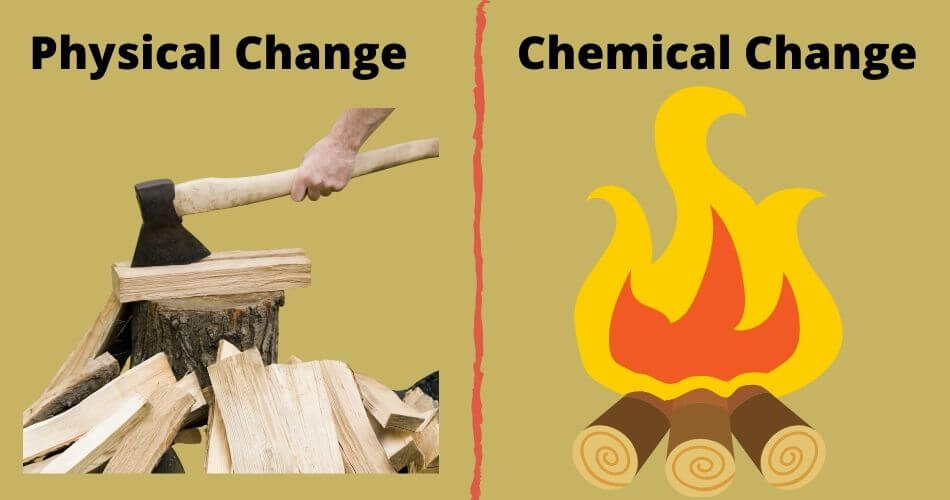

Hot molten iron is a liquid and when left to cool will from solid steel and can take many forms.ĥ.ĝissolving sugar in water is a physical change. It turns to a gas but maintains the properties of alcohol.Ĥ. Rubbing alcohol left uncovered will evaporate quickly into the air. Water boiling is a physical change as water molecules vibrate faster, they enter the gas phase and become water vapor.ģ. Ice melting involves a change from a solid to a liquid and the substances maintain the properties of water because the molecules never change.Ģ. Separating individual metals from an alloy can be difficult and may require chemical processing – making an alloy is an example of a physical change that cannot readily be undone by physical means.Īlloys where mercury is one of the metals can be separated physically by melting the alloy and boiling the mercury off as a vapour.1. The mixing of different metal elements is known as alloying. Others such as mixtures or volatile liquids such as low molecular weight alcohols, can be separated by fractional distillation. Most solutions of salts and some compounds such as sugars can be separated by evaporation. Examples of chemical changes include baking soda and vinegar creating carbon dioxide, iron rusting, and wood burning. Neither the sand on its own nor the water on its own will make a sand-castle but by using physical properties of surface tension, the mixture behaves in a different way. One familiar example is the mixture of fine sand with water used to make sandcastles. However mixtures can have different properties from the individual components. Mixtures of substances that are not soluble are usually readily separated by physical sieving or settlement. Crystal type, shape and size can be altered by physical hammering, rolling and by heat Some such as carbon can form several different forms including diamond, graphite, graphene and fullerenes including buckminsterfullerene.Ĭrystals in metals have a major effect of the physical properties of the metal including strength and ductility. Many elements and compounds form crystals. The process is reversible and does not affect the chemical composition. Some substances such as iodine and carbon dioxide go directly from solid to gas in a process called sublimation.įerro-magnetic materials can become magnetic.

Many elements and some compounds change from solids to liquids and from liquids to gases when heated and the reverse when cooled. Although chemical changes may be recognized by an indication such as odor, color change, or production of a gas, every one of these indicators can result from physical change. Many chemical changes are irreversible, and many physical changes are reversible, but reversibility is not a certain criterion for classification.

Many physical changes also involve the rearrangement of atoms most noticeably in the formation of crystals. A steel blank is repeatedly heated and hammered which changes the hardness of the steel, its flexibility and its ability to maintain a sharp edge. The decomposition (breakdown) of hydrogen peroxide (H2O2) to form water (H2O) and oxygen gas (O2) is an example of chemical. Examples of physical properties include melting, transition to a gas, change of strength, change of durability, changes to crystal form, textural change, shape, size, color, volume and density.Īn example of a physical change is the process of tempering steel to form a knife blade. For example, salt dissolved in water can be recovered by allowing the water to evaporate.Ī physical change involves a change in physical properties. In general a physical change is reversible using physical means. This contrasts with the concept of chemical change in which the composition of a substance changes or one or more substances combine or break up to form new substances. Physical changes occur when objects or substances undergo a change that does not change their chemical composition. Physical changes are used to separate mixtures into their component compounds, but can not usually be used to separate compounds into chemical elements or simpler compounds. Physical changes are changes affecting the form of a chemical substance, but not its chemical composition.
/TC_608334-chemical-change-examples-5aabebea31283400371a753e.png)
Please help improve this article by adding citations to reliable sources. This article needs additional citations for verification.


 0 kommentar(er)
0 kommentar(er)
